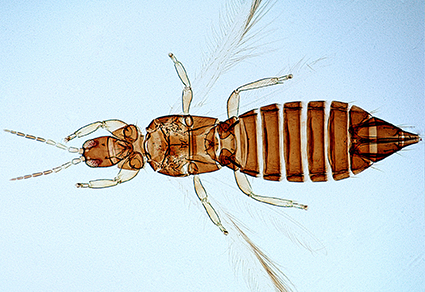References
Bagnall, R.S. (1927) Contributions towards a knowledge of the European Thysanoptera. III. Annals and Magazine of Natural History, Series 9, 20, 561–585. https://doi.org/10.1080/00222932708655491
Bhatti, J.S. (1986) A new species of Holarthrothrips from Iraq, with notes on host plants and key to species, along with clarification of the position of this genus among Thysanoptera. Zoology (Journal of Pure and Applied Zoology), 1, 1–33.
https://doi.org/10.46318/Zoology.1.1.1986.1-33
Bhatti, J.S. & Ananthakrishnan, T.N. (1978) Studies in Some Indian Thysanoptera. Entomon, 3, 229–238.
Minaei, K. (2013) Thrips (Insecta, Thysanoptera) of Iran: a revised and updated checklist. ZooKeys, 330, 53–74.
https://doi.org/10.3897/zookeys.330.5939
Mound, L.A., Heming, B.S. & Palmer, J.M. (1980) Phylogenetic relationships between the families of recent Thysanoptera. Zoological Journal of the Linnean Society of London, 69, 111–141.
https://doi.org/10.1111/j.1096-3642.1980.tb01934.x
Mound, L.A. & Marullo, R. (1998) Two new basal-clade Thysanoptera from California with Old World affinities. Journal of the New York Entomological Society, 106 (2–3), 81–94.
ThripsWiki (2021) ThripsWiki—providing information on the World’s thrips. Available from: http://thrips.info/wiki/Main_Page (accessed 20 August 2021)
Wiesenborn, W.D. (2021) New distribution records of Heratythrips sauli Mound & Marullo, 1998 (Thysanoptera: Stenurothripidae), with description of the first known adult male. The Pan-Pacific Entomologist, 97 (1), 7–11. https://doi.org/10.3956/2021-97.1.7


